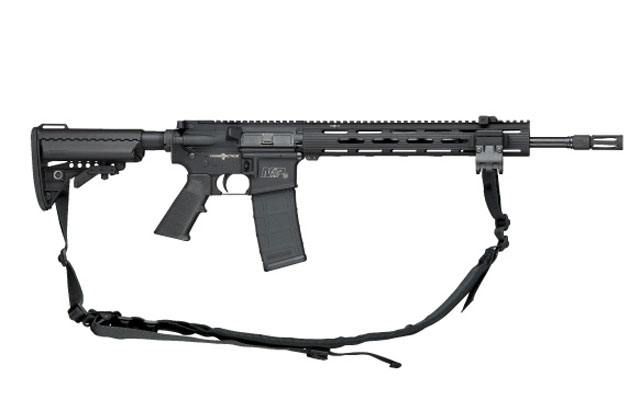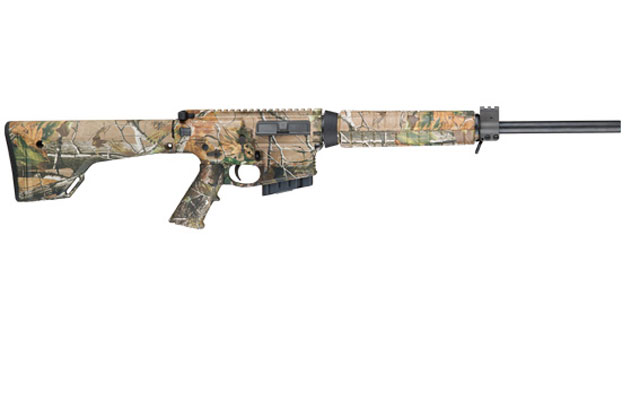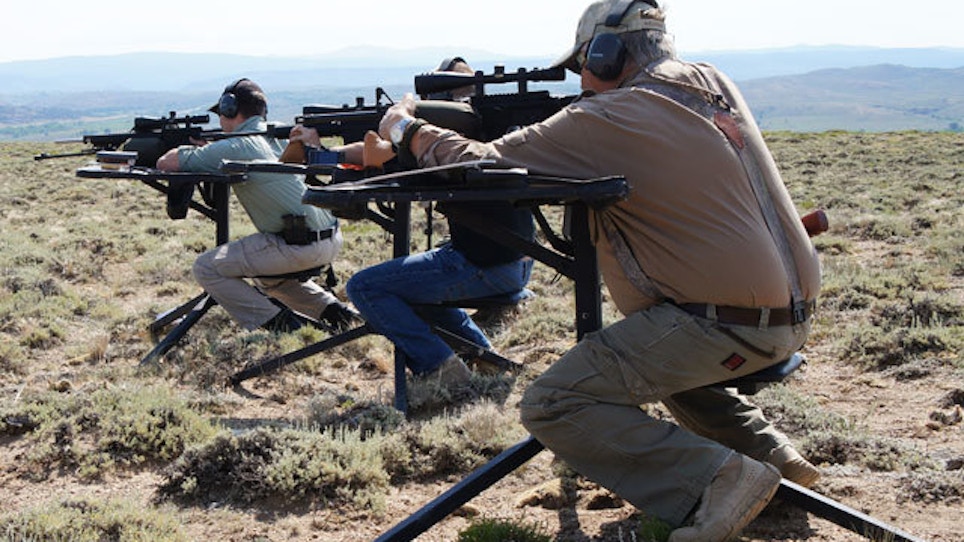It’s not that often a writer gets to put a few of the top new rifles on the market to the ultimate test. Maybe there’s a few hours at the range punching paper at various distances, or likely just a chat at a trade show with the usual spiel on how awesome the new rifle is.
You may even get to throw it up against a pig or two, but putting it through multiple days of multiple (moving) targets in a multitude of ranges and shooting stances isn’t what’s most often on the program.
That is unless you’re plinking prairie dogs in the mountain valleys of southern Wyoming.
Few tests put weapons through the gauntlet like a whistle pig hunt in the rolling fields of sage and wheat. Point blank shots? Check. Three hundred yard shots? Check. Shooting from sticks, standing, kneeling, sitting, braced on a truck, prone, on the move? Check. Dust, heat, rapid mag changes, on-the-fly shots? Check.
It’s through these kinds of conditions that Predator Xtreme had the chance to put two of the newest AR platforms from Smith & Wesson and a new modular bolt gun from Thompson Center to the test to truly see if the hype matched performance. Each brought unique capabilities to the table and offered exceptional value to the sportsman looking to fill gaps in his hunting quiver.
 M&P15 VTACII
M&P15 VTACII
Designed with the help of one of the world’s most accomplished tactical shooters, the Smith & Wesson M&P15 VTACII may not be a hunter’s first choice in picking an iron for a predator shoot. But take a closer look, and you’ll see why the VTAC II can serve as a utility player in any shooter’s arsenal.
Developed by Kyle Lamb, a former Delta Force soldier who wrote one of the most sought after books on tactical carbine use, the VTAC II combines the multi-round reliability and accuracy of the three gun competition rifle, with a streamlined tactical finish that would appeal to any military or law enforcement officer. While those credentials may not seem relevant to the hunter, when you’re gunning for varmints, they come in handy.
The low profile rifle fits neatly between the seat and dash of a truck bouncing through fields in search of the crafty critters and when the heads pop up, it deploys quickly and delivers devastating shots at extended ranges. The full-length Troy AlphaRail handguard gives a shooter a variety of hand positions to shoot from, either resting the rifle on the hood of the car, bracing against a fender or shooting freehand in any position. The Vltor stock gives a comfortable cheek weld and the 4.5-pound Geissele Super-V trigger avoids the “el snatcho” effect of heavier pulls.
The rifle was bumped, bruised, dropped, dusted and fired hundreds of Hornady V-Max and Zombie Max .223 rounds through it with only one stoppage that was surely the work of an overused magazine. All this adds up to a rifle that offers pretty strong versatility for the shooter who might want one firearm for competition, self defense, sport and hunting.
 M&P10
M&P10
New for 2013, the Smith & Wesson M&P10 offers shooters a heavier round for their AR platform. The .308/7.62x51 firing M&P10 features an 18-inch barrel and a six-position collapsible stock that helps keep the rifle’s profile to a minimum. A lot of shooters have been asking for a sporting AR that fires the tried and true .308 and Smith & Wesson finally delivered -- and at a retail price of about $1,600, the rifle won’t break the bank like others in its class.
While the M&P10 shot with the same reliability and accuracy as other ARs on the hunt, what really stood out about the .308 rifle was its light recoil which allowed for easy follow up shots on those pesky p-dogs. Part of the rifle’s success comes from the incorporation of Smith & Wesson’s patented flash hider, which ports secondary gas back and away from the shooter while also reducing the light signature as rounds exit the barrel. The rifle comes standard with ambidextrous controls which are surprisingly useful even for right handers.
The M&P10’s 18-inch barrel is also built with 5R rifling which was adopted by S&W sister company Thompson Center for its bolt guns. Company engineers say the 5R rifling helps with accuracy, shot consistency and cleaning.
Thompson Center Dimension
Speaking of Thompson Center, this year marks the commercial introduction of their modular bolt gun dubbed the “Dimension.” The Dimension is a tinkerer’s dream gun, with its ability to swap out calibers in four specific groups by simply changing a few parts, a sportsman can buy two powerful rifles for the price of an extra barrel — think of it as a varmint and elk gun in one.
The Dimension was bestowed with the NRA’s Golden Bullseye.
Award for 2013 rifle of the year, and on the prairie dog mounds of Wyoming the Dimension was a killer. With its polymer stock, free floated barrel and three-round magazine, the rifle was incredibly light and nimble, the action was smooth as silk and the balance and accuracy make even the worst long range shooters look like SEAL snipers.
Skeptics might think that with all the interchangeable parts and add-ons the Dimension would be a bit on the loose, wobbly side, but the tolerances were tight as a drum and there was no give even after a lot of banging around in and out of a vehicle and hundreds of rounds shot through it. With this thing, the p-dogs never had a prayer.
With all the offerings from Smith & Wesson and Thompson Center — including the competition class M&P15 VTACII, the hard hitting M&P10 and the modular Dimension bolt gun — it’s hard to choose which rifle to put through the prairie dog gauntlet. If you’re an AR aficionado with a predilection for more punch, the .308 M&P 10 might do the trick. For AR-versatility and all-around badassery, the VTAC II is hard to beat. And for bolt-gunners with an itch for an AR’s interchangeability, the Thompson Center Dimension might be just the ticket.






